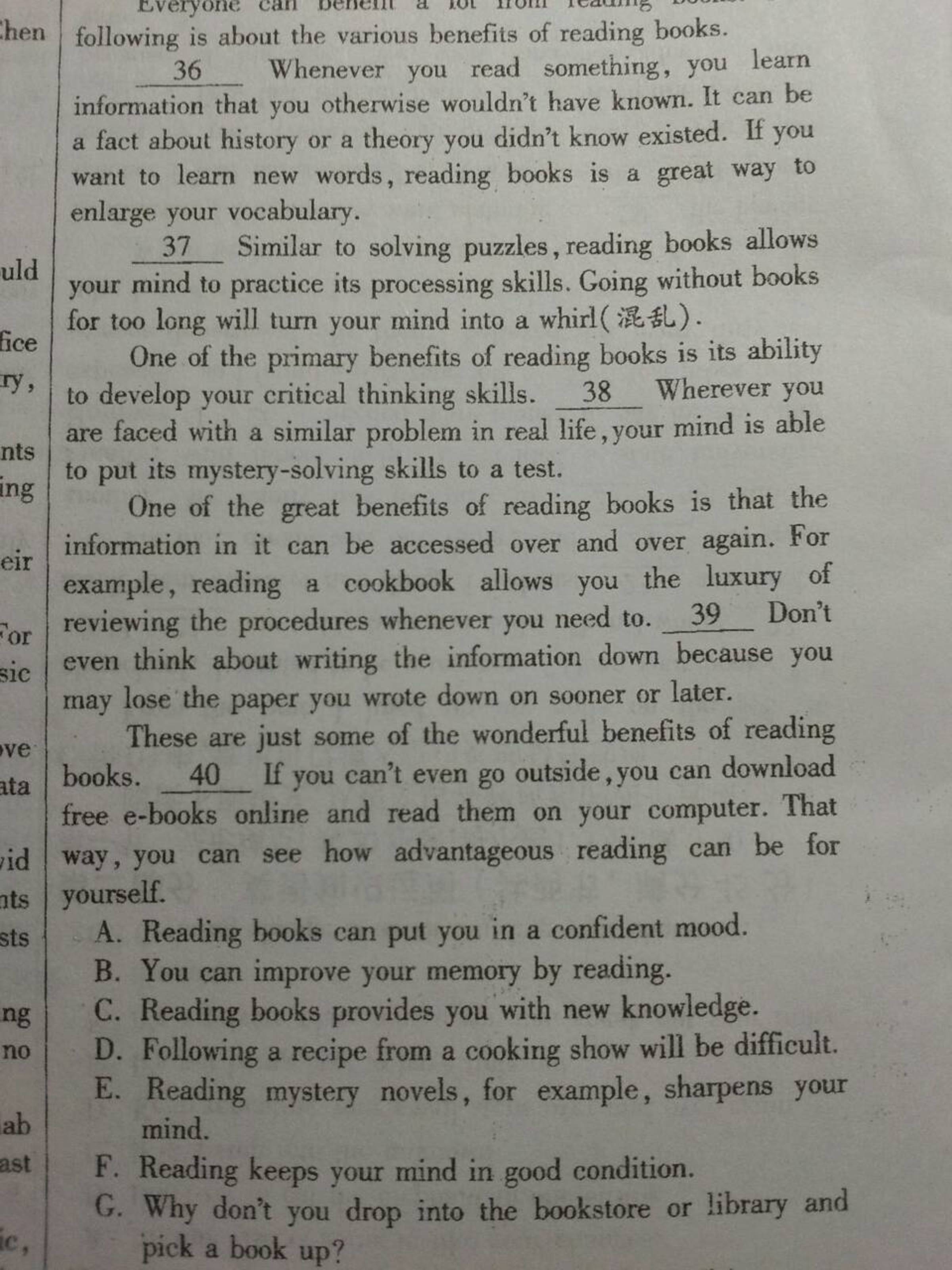
Seven choose five (abbreviated as for fancy naming) is a format in China's English exam, as shown above. Of course, we aren't here to solve the problem above, nor to calculate , but to help Alice in Wonderland make wiser choices.
The problem scheme is as follows:
As the name suggests, there are seven choices to choose from and you need to select five choices to fill in the corresponding blanks in the passage. Of course, there is only one correct set and order of answer and each choice must be at most used once . To figure out how well students performs on this kind of problem, we just need to count how many of the choices are in the same corresponding blanks as the correct answer, each of which worths 2 points. For instance, if your answer is ABCDE while the correct answer is ABCEF, you will get 6 points.
Alice, who has traveled the Wonderland, was trapped in the rabbit hole again only to find she was right on the China's English exam and she was doing right now. Since she hasn't learn much English grammar, not to mention how to do this kind of problem, she finally decided to randomly fill in the blanks.
Alice is a considerate and clever girl. Even if she doesn't know how to do it, she can come up with methods of getting as much expected score as possible. Right at the moment, she has thought of four methods:
-
Method A: She directly wrote the easiest answer to think up, ABCDE.
-
Method B: Fill in the same choices in all the blanks, like AAAAA, BBBBB, etc.
-
Method C: Since she had a 7-sided dice brought from the Wonderland, she decided to roll the dice and write the choices on the top of the dice in each blank. Assume that the probability of the outcomes is the same. Her answer would allow repetition , like ACGAC.
-
Method D: Alice thought that each choice must be at most used once , so the process is the same as Method C, but when there are repeated choices, she had to roll the dice again and again until she rolled a choice not appeared in the previous sequence of outcomes. Her answer would not have repetition , like BACGF.
Assume that the correct answers are also generated randomly and the probability of each set of answer is the same.
Alice is a curious girl and wants to know which method will benefit her more for . She needs you to find out:
Which method will yield the greatest expected score for ? (Or not?)
Note : The correct answer seems at first conterintuitive, but in fact it is true. This problem may also give you some suggestions of dealing with this type of problem when you have completely blank mind.
This section requires Javascript.
You are seeing this because something didn't load right. We suggest you, (a) try
refreshing the page, (b) enabling javascript if it is disabled on your browser and,
finally, (c)
loading the
non-javascript version of this page
. We're sorry about the hassle.
Define the 0-1 random variable X i to indicate whether the answer to the i _th question is correct, for each i .
Then the expected score is X = ∑ i = 1 5 E [ X i ] , thanks to the linearity of expectation. There may be correlations to these 5 variables (there are!) but we don't care if we're only asked for the expected value. (Note that the expected score may itself happen with probability zero, but we don't care.)
If we fix a value of i , it's clear that E [ X i ] = 1 / 7 . Thus E [ X ] = 5 / 7 , at least for methods (b)-(d).
Caveat: it's not entirely clear that method (a) is a random method. If the answer given isn't random and the solutions aren't random, it's not clear what is meant by "expected score". That's a term that is only meaningful in the context of some kind of probability distribution.